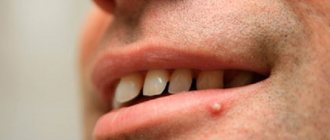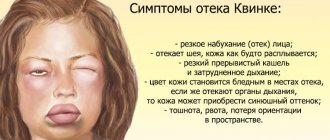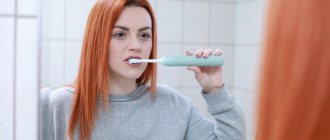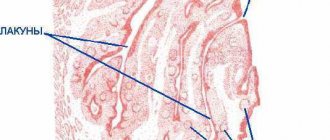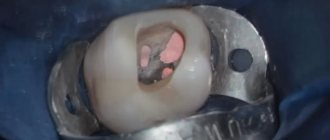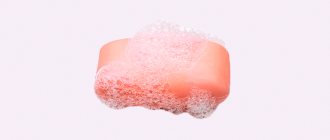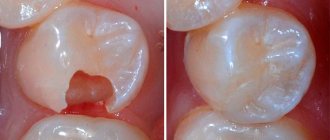The main reasons why lips are damaged
The skin consists of several layers: hypodermis, dermis and epidermis. This last surface layer is designed to protect against aggressive external influences, since it consists of a hydrolipid film, partly produced by the sebaceous glands.
There are no sebaceous glands or melanocytes on the lips. It is for these reasons that lips are especially sensitive, easily damaged and most susceptible to external aggression (rain, wind, cold, etc.).
The extent of lip damage depends on the degree of dryness. A slightly dehydrated lip will look a little dry. Slight peeling may then appear. As dehydration continues, flaking becomes more intense, giving the lips a pale appearance. Finally, as dry skin becomes more severe, cracks may appear on the lips, which can cause bleeding. At this point, the person begins to feel pain with every movement of the mouth.
What not to do after lip augmentation - safety precautions for patients.
The simplicity and accessibility of contour plastic surgery should not be deceptive: there are many pitfalls associated with it, the presence of which must be prepared in advance.
The aesthetic result of lip augmentation with hyaluronic acid fillers depends on several factors: the injection technique, the professionalism of the doctor, the brand of the drug... But the main thing is how strictly the patient will follow the cosmetologist’s instructions and comply with all restrictions. This article contains the doctor’s basic recommendations and a detailed list of what you can and cannot do after the procedure:
What to expect in the first hours and days? Injections into the delicate and sensitive skin of the lips will be painful, and even with the use of an anesthetic cream, unpleasant sensations cannot be avoided: injuries to numerous blood vessels and stretching of the tissues by the injected gel will remain for some time. Unpleasant sensations for 2-3 days after injections are considered normal, and swelling and bruises can persist for up to 1 week.
The main recommendation for the first time is to simply wait and endure this period, making do with minimal care:
Healing creams and painkillers - if the sensations become unbearable. Periodic, but not frequent, cold compresses to keep swelling under control. A special light massage is necessary for uniform distribution of the injected drug - a cosmetologist will show you the technique. Constant monitoring of your condition - you should know the main signs of complications and side effects and, if they occur, immediately seek medical help. But the list of prohibitions is much wider, and some of them will require significant changes in habits and lifestyle. Next, we will analyze the basic post-procedure rules and talk about why it is so important to follow them.
Temperature: what is more harmful – heat or cold?
The desired volume during lip augmentation is formed due to the dense gel-like consistency of the injected filler, as well as due to the fact that hyaluronic acid attracts additional water molecules. These features of the drugs require special attention to the temperature regime:
You should not eat/drink hot foods or drinks on the first day after contouring. During injections, our skin and soft tissues are repeatedly injured. In response to this, a local release of inflammatory mediators occurs, which dilate blood vessels and increase microcirculation; more fluid enters the target area, which provokes the appearance of swelling. Eating hot food or drink further activates blood and lymph flow, thereby enlarging and aggravating swelling. The minimum required period of abstinence from heated foods is within 4 hours after the procedure, but it will be better and safer to return to them only the next day. Reduce the frequency of visits to the bathhouse or sauna. These activities lead to a general increase in body temperature and acceleration of metabolism. Under such conditions, the breakdown of hyaluronic acid is significantly activated. It will be especially noticeable in the first days after the injection session, but negative changes are possible much later, even after several weeks and months. Therefore, those who want to enjoy a seductive smile for as long as possible should avoid such thermal procedures for the entire duration of the filler. Don't overdo it with cold compresses. This point often causes bewilderment among patients, because low temperatures can quickly relieve swelling and eliminate hyperemia, and the first time such a remedy will most likely be offered by the cosmetologist himself immediately after completing the injections. Moderation is important here: excessive cooling of the treated area will not only slow down the natural distribution of the gel in the lips, but will also negatively affect the healing of injection wounds. Also, low temperatures cause dry skin, which can cause microcracks and other damage. It is safe to use cold compresses no more than 2-3 times a day for 10-15 minutes. And in no case should you apply bare ice - it must be wrapped in a towel or several layers of napkins to prevent thermal injury to the skin. Physical effects The first few days after injection, the injected gel is distributed naturally over the entire area of the treated area. Any pressure, tension, or even just active movements of the mouth can cause the filler to lie unevenly, causing clearly visible asymmetry, compaction, or deformation. To prevent this from happening, all such influences should be excluded for up to 5-7 days.
In particular, it is not recommended:
Open your mouth wide (when screaming, active facial expressions, etc.) Also, it is necessary to temporarily exclude from the diet foods the consumption of which unnecessarily strains the perioral area - these are, for example, large apples. However, no one bothers you to cut it into small pieces and enjoy it without any risk. Kissing – we are talking primarily about active, passionate kisses. Gentle and weightless touches of the lips have never harmed anyone, even in the very early recovery period. Treat your teeth and carry out other procedures at the dentist. These events may require particularly long and intense tension in the mouth, sometimes it needs to be kept open for an hour or more - therefore, it is advisable to make an appointment with the dentist no earlier than 3-4 weeks after the injection of fillers. Sports, sun rays and water procedures - our friends or enemies? sun protection after lip correction Changes in homeostasis (the internal state of the body), as well as the influence of environmental elements, can accelerate the breakdown of hyaluronic acid or provoke deformation of the lip contour. To avoid such consequences, the following rules exist:
Avoid intense physical activity for 7-10 days. During exercise, blood pressure and body temperature increase, and blood vessels dilate. Such changes, firstly, provoke the occurrence of persistent swelling and hyperemia in the area of correction, and secondly, they accelerate the breakdown of hyaluronic acid. Do not forget about sweating, because the liquid removed in this way contains a high amount of salt (NaCl), which prevents the healing of wounds after injections. You can't sunbathe, incl. visit the solarium for at least 2 weeks. Two factors have a negative effect on the treated area: high temperature (its effect is described above) and UV rays, which also accelerate the breakdown and removal of HA. Also, there have been cases of photosensitization of the body in women and the development of allergic reactions after prolonged exposure to solar radiation on the correction area, so for the first time after the procedure it is highly advisable to cover the skin of the lower part of the face from exposure to ultraviolet radiation. We avoid pools and reservoirs with a high salt content. Immediately after the procedure, the delicate skin of the lips and perioral area becomes vulnerable and easily injured. Chlorine contained in swimming pool water, as well as salts dissolved in the water of lakes or seas, cause excessive dryness of the skin, which, together with their overstretching, contributes to the occurrence of cracks, maceration and longer healing of wounds. In addition, through “public water” it is easy to introduce infection into open wounds. Alcohol and smoking – do you need to give up bad habits?
There is no direct interaction between hyaluronic acid molecules and ethyl alcohol, but some cosmetologists believe that drinking alcoholic beverages immediately after lip augmentation will negatively affect the results of the procedure. The reason is that alcohol accelerates blood flow and can help “wash out” part of the injected HA from the target area. In addition, alcohol always increases swelling, so it would be better to avoid excessively “large-scale” libations, at least for 1 week. At the same time, there will be no significant harm from small volumes and low strength drinks - for example, a glass of wine, beer or champagne.
But you can smoke without any special restrictions. This habit, of course, is harmful to the body, but it does not affect fillers in any way - nicotine temporarily constricts blood vessels, but does not significantly disrupt the regeneration processes, does not lengthen the rehabilitation period after contouring and does not contribute to the removal of hyaluronic acid.
Creams, ointments and medications
There are few nuances associated with various kinds of drugs and medications: they do not significantly affect the aesthetic result, although they can somewhat slow down healing:
What can and cannot be applied to lips after lip augmentation? As a rule, already in the first days after the procedure, the use of healing agents such as Bepanten, Lyoton, Traumeel, etc. is allowed, but this step should be previously agreed with your cosmetologist. Also, it is not forbidden to use a neutral hygiene product. But lipsticks, glosses and other decorative cosmetics will remain banned for some time, which we will talk about below. What medications should not be taken after contouring? The main danger here is from drugs that negatively affect blood clotting (for example, aspirin or ibuprofen) - they contribute to the development of edema and the appearance of large bruises in the chipped areas. If it is necessary to relieve pain, you should use drugs without a thinning effect, for example Paracetamol. If, for example, Aspirin is taken as a course for other medical reasons, then you will have to either completely abandon fillers, or prepare in advance for the appearance of large hematomas and possible complications associated with them. Is it possible to use antibiotics? This group of drugs does not change the properties of hyaluronic acid in any way, does not lead to its breakdown and does not otherwise affect the results of the procedure. Therefore, if the doctor prescribed the appropriate course a few days after the session, there is no reason to worry about the aesthetic result. But if the tablets were prescribed before the visit to the cosmetologist, it is better to drink the entire prescribed amount and only then carry out injections - only in this case can you be sure that the infection that antibiotics are designed to fight will not lead to unnecessary complications after injections.
Cosmetics and hygiene Lip contouring does not change the rules of facial care, makeup and other home procedures as much as, for example, biorevitalization. But, nevertheless, there are several important limitations here:
How soon can I wear makeup and apply decorative cosmetics? The composition of lipsticks, glosses and foundations is quite aggressive towards the skin, which, after “beauty injections”, temporarily loses its protective barrier. Therefore, experts recommend putting such products aside for at least 1 week, until all injection marks have healed. Tatauge - before or after fillers? Having seen herself renewed, rarely does a lady stop there. Quite often, lip augmentation is followed by permanent makeup. And this is a mistake: the fact is that HA is removed from the body within six months, while coloring pigments can decompose for more than 2-3 years. At some point, the lips will inevitably shrink and the permanent on them will look asymmetrical and inappropriate. Those who, in this case, are not ready to regularly and with filigree precision “finish” the required volume should do pigmentation of the red border in advance, before introducing hyaluronic acid. The most important recommendations
| What not to do | Why | As soon as possible |
| Eat and drink hot | Increases swelling | No less than 4 hours later, preferably 1 day |
| Sunbathe, incl. solarium | Accelerates the breakdown of HA, can lead to pigmentation disorders | 2 weeks |
| Thermal treatments (bath, sauna, etc.), sports and other types of physical activity | Promotes the removal of hyaluronic acid | 1-2 weeks |
| Paint lips | Interferes with the regeneration of injured areas | 5-7 days (after complete healing of the skin) |
| Kiss | May lead to uneven filler distribution, asymmetry and other deformations | 1 Week |
| Alcohol | Increases swelling | 1 Week |
| Aspirin and other blood thinners | Promotes the appearance of large hematomas | 2-3 days until damaged vessels thrombose |
Factors that contribute to dry and chapped lips
The main factor leading to dry and cracked lips is climate. In fact, two situations are particularly favorable for this:
- Very low outside temperature. The phenomenon intensifies with strong cold winds.
- Prolonged exposure to the sun.
Other reasons can only increase the risk of chapped lips:
- regular exposure to chlorine, such as in swimming pools;
- excessively frequent use of lipstick;
- taking certain medications that have dry skin as a side effect;
- natural aging of the body, which makes the skin less elastic and reduces collagen production;
- the presence of diseases such as diabetes, thyroid dysfunction, psoriasis;
- very acidic foods, such as lemons or tomatoes;
- some chemical compounds in toothpaste;
- deficiency or overconsumption of vitamin B or A;
- allergies to certain cosmetics or products that cause lips to swell and become a source of aggression.
Our lips are also the most damaged by dryness because we all make the same mistake.
The first reflex, when our lips are dry and there is a feeling of tightness, and there is no nourishing balm at hand, we run our tongue over our lips to moisturize them. And this is an unforgivable mistake, since even if you wet your lips a little with saliva, it will instantly, but temporarily, bring relief. Since saliva quickly evaporates and dries the lips even more, since it contains enzymes that play an important role in the chemical digestion of certain substances contained in food, and these same enzymes, when in contact with the lips, can have a negative effect in the form of tissue dehydration.
Secrets to effectively combating cracks on the lower lips
Before prescribing treatment, the dermatologist determines the cause of the disease. Eg:
- if it is vitamin deficiency, it is enough to take a course of multivitamins and add medicinal ointments;
- if the cause is malocclusion, consultation and follow-up with an orthodontist, etc. is necessary.
Drug treatment includes pain relief and anti-inflammatory ointments. Surgical intervention is rarely prescribed, only if conservative therapy does not produce the desired results, but even in this case, effective minimally invasive laser treatment is possible. Subsequently, the dermatologist will prescribe moisturizing cosmetics, recommend giving up smoking and getting rid of the habit of licking your lips, otherwise relapses cannot be avoided!
Herbal and natural active ingredients to treat dry and chapped lips
Lips are an important element for facial beauty, participating in verbal and visual communication, as well as food consumption. However, the skin of the lips is 5 times thinner than the skin of the body, so they need to be given special attention.
The lethal weapon against chapped lips and optimal hydration throughout the day is lipstick! Make it a rule to use paraben-free and paraffin oil-free lipstick because when there is too much of it, the skin rejects it, which increases dryness. Long-lasting shiny, matte or very dark lipsticks can prevent your lips from breathing.
Lip balm can also provide a layer of protection against the adverse effects of wind and cold. It can be used with confidence even when we are staying at home to lock in moisture inside the lips, while providing additional hydration due to the active ingredients it contains (especially if the balm is of good quality and contains essential oils).
Lip balm not only prevents dehydration, but also closes cracks on the lips, thereby preventing them from becoming infected.
Be careful, as many products found in lipsticks and lip balms can cause dehydration and aggravate irritation. This is the case with:
- Aluminum salts, menthol, eucalyptus, phenol and camphor. Menthol, camphor and phenols only cause a state of imaginary comfort, and sometimes even increase dehydration.
- Silicone oil is another very common ingredient (it's also found in lipsticks and glosses for added longevity), but it only promotes dehydration.
- Salicylic acid (although it has proven anti-inflammatory properties) in balms can promote dry lips and flaking.
- If you have acne-prone skin, it is best to avoid cosmetics containing petroleum jelly. Although this substance is very effective for dry lips, some users with acne-prone skin claim that these products can clog pores too much and contribute to the appearance of blackheads.
An equally interesting article: Activated carbon is an ideal facial cleanser!
Powered by Inline
Treatment of cheilitis
Treatment of the disease depends on the causes of its occurrence. For example, to treat allergic cheilitis, drugs are used that reduce the body’s sensitivity to allergens - antihistamines, as well as vitamins. Zinc ointment, anti-inflammatory creams containing glucocorticoids, salicylic acid, and sulfur are used externally. Avoid substances that irritate the mucous membrane of the mouth and lips. After eating, rinsing with chamomile infusion or soda is useful. To determine the allergen, it is necessary to conduct allergy tests.
For fungal cheilitis, antifungal drugs are prescribed in combination with vitamin B2 and ascorbic acid. An examination by a dentist and, if necessary, complete sanitation of the oral cavity and thorough treatment of problem areas with oil solutions of vitamins are recommended. To prevent relapses, a diet with limited carbohydrates is prescribed. In the treatment of exfoliative cheilitis, corticosteroid and photoprotective ointments, 2% boric salicylic acid ointment are widely used. In the presence of an exudative form of exfoliative cheilitis, Bucca radiation is effective.
Diagnosis of this disease is carried out by several doctors: a therapist, a dentist, an allergist. A combination of systemic (general) and topical (local) drug therapy produces a good effect.
Back to articles
In what cases is it important to stop self-medication and consult a specialist?
Experts warn that chapped lips are not only an aesthetic problem, but they can indicate the presence of diseases that we know about or not. Therefore, home treatment for dryness and small cracks on the lips must be stopped immediately and a visit to a medical facility should not be postponed in the following cases:
- If the condition of your lips does not improve after 2-3 weeks, you should find out the reason. Because it could be an allergic reaction to lipstick, lip balm or one of the ingredients in toothpaste.
- Herpes is the most common infectious disease of the lips. You must react at the first symptoms so that this pimple does not grow and damage your lips.
- If lips are persistently red, dry, or scaly, this may be a sign of an underlying systemic infection.
- If cracks or white spots systematically appear on the lips and corners, despite the use of a moisturizing balm. These signs may indicate a yeast infection: oral thrush, angular cheilitis, or thrush associated with a microscopic fungus.
Symptoms of cheilitis
The disease manifests itself in a variety of symptoms; common complaints include swelling, redness, peeling of the lips, the appearance of bleeding ulcers, purulent crusts, burning and pain when opening the mouth and eating.
There are several forms of this pathology:
- Catarrhal
- Glandular
- Exfoliative
- Eczematous
- Candida
- Allergic
The causes of catarrhal cheilitis are usually injuries, weather conditions, and chemical damage. This form of the disease manifests itself in the form of diffuse inflammation of the lips, swelling, redness, and peeling.
With glandular cheilitis, the mucous glands of the lips become inflamed. The disease can occur against the background of injuries with the addition of infection. The presence of bad habits can also contribute to the development of this form of cheilitis.
The disease manifests itself as enlarged glands, discharge of pus, and increased lip volume. Often, as a result of such an inflammatory process, the lips do not restore their previous shape, since changes in the form of cysts form in the labial glands.
Exfoliative cheilitis is divided into dry and exudative. Exfoliative cheilitis is more common in women. With dry exfoliative cheilitis, yellow scales appear on the lips and dryness is pronounced. In addition, the red border of the lips is affected by dyskeratosis.
The exudative form of exfoliative cheilitis is characterized by severe pain, swelling of the lip, and the presence of abundant crusts that make speech and eating difficult. Sometimes the crusts hang down in the form of an apron when the exudative phenomena are significant. Candidal cheilitis is provoked by the fungal infection Candida albicans, and this form of the disease is often combined with stomatitis.
Various allergens can cause another form of cheilitis - eczematous. This type of cheilitis occurs when there is an allergy to cosmetics, a lack of B vitamins in the body, or chronic injury to the lips. In addition, allergic (eczematous) cheilitis occurs due to increased sensitivity of the red border of the lips to chemicals (for example, dyes) included in toothpaste, lipstick, and dentures. It occurs with swelling and redness of the red border of the lips, then becomes covered with abundant scales and crusts, and painful cracks form in places.
